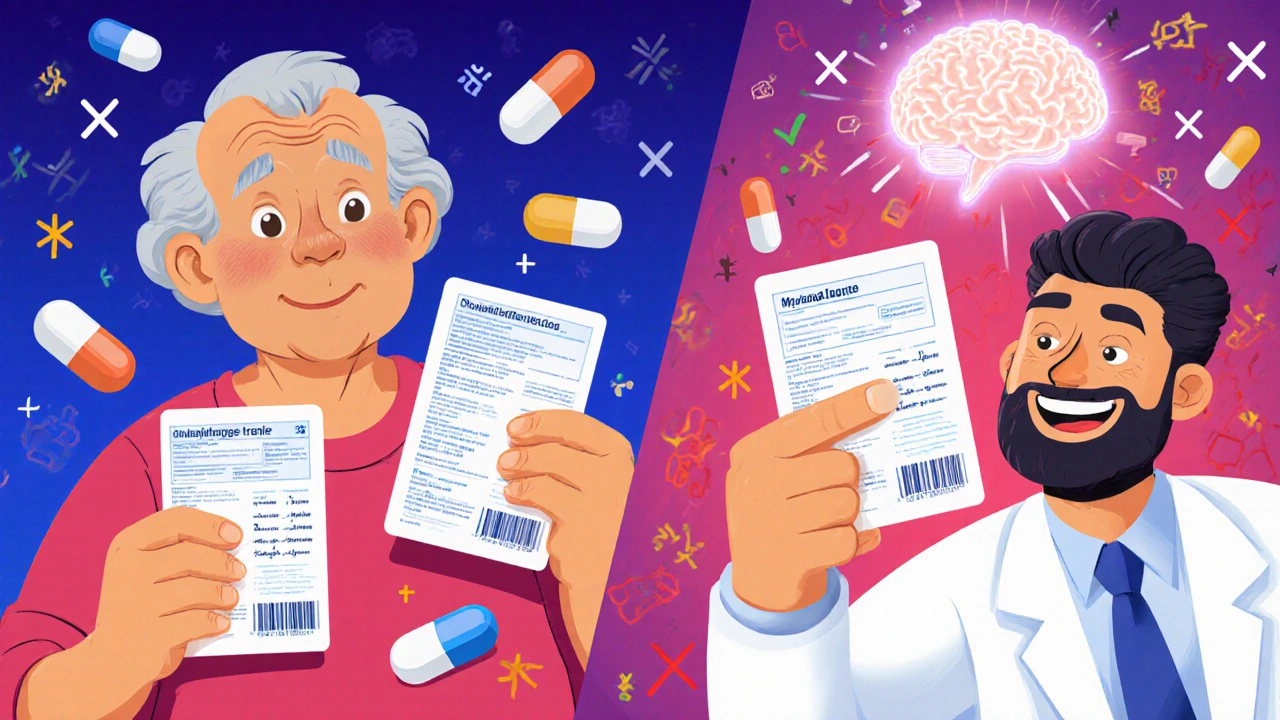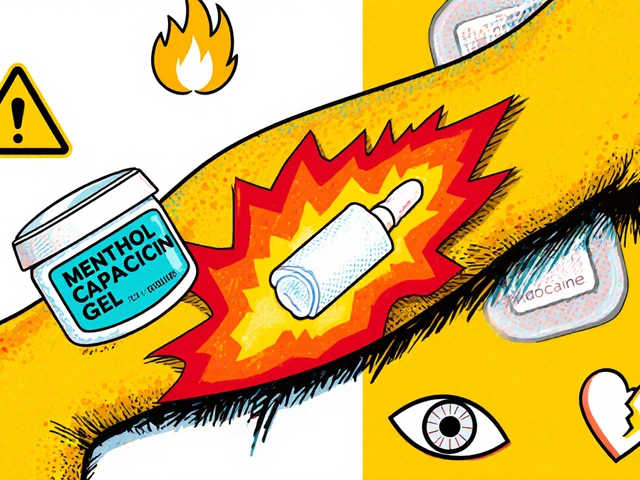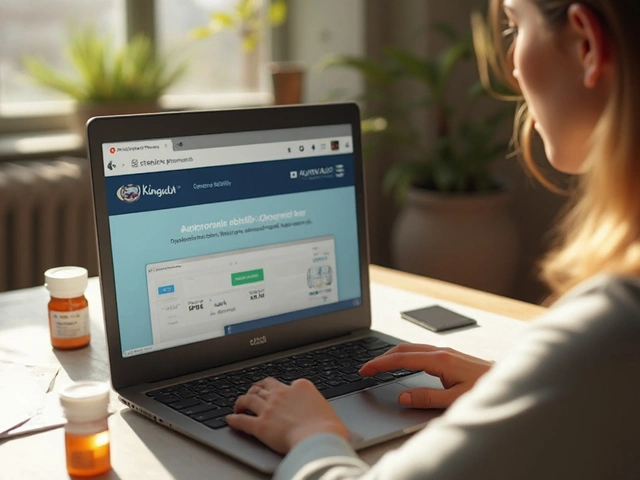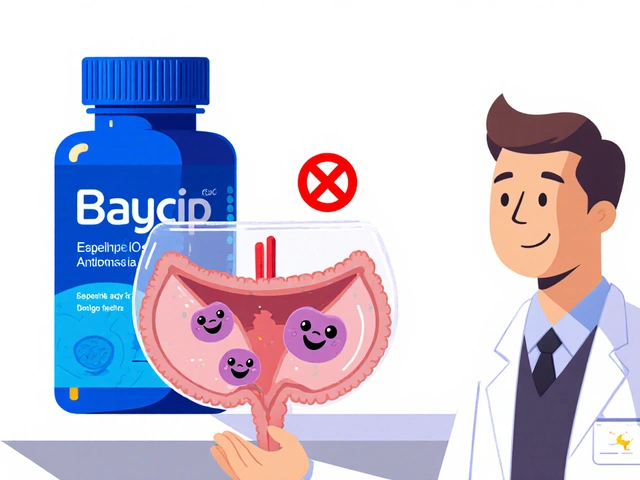When you’re over 65, taking a pill shouldn’t feel like playing Russian roulette. Yet for many older adults, switching from a brand-name drug to its generic version brings real worry - and sometimes real danger. The truth? Generic drugs are just as safe and effective as brand-name ones, according to the FDA and the National Institute on Aging. But generic drug safety in older adults isn’t just about chemistry - it’s about aging bodies, multiple medications, and how your system changes after 70.
Why Your Body Reacts Differently to Medicines After 65
Your liver doesn’t process drugs the way it did at 30. Your kidneys don’t flush them out as fast. Your body fat increases, and water content drops. These aren’t minor changes - they’re major shifts in how medicines behave inside you. A 2023 study found that by age 75, drug metabolism can drop by up to 30%. That means a pill your body handled fine at 60 might build up to toxic levels by 80. A normal dose? For many seniors, it’s an overdose. This is why medications like beta blockers can cause dangerously slow heart rates, digoxin can trigger irregular heartbeats, and insulin or sulfonylureas can send blood sugar crashing - leading to falls, confusion, or even brain injury. The problem isn’t the drug’s name. It’s the dose. And that’s where generic drugs get tangled in a bigger issue: polypharmacy.Polypharmacy: The Silent Killer in Senior Medicine Cabinets
If you’re taking two medications, your risk of a bad reaction is about 13%. With five, it jumps to 58%. With seven or more? It’s 82%. That’s not a typo. Nearly four out of five seniors on seven or more drugs will have an adverse reaction. Many of these reactions come from drugs that shouldn’t even be in the mix. The 2023 Beers Criteria - the gold standard for safe prescribing in older adults - lists dozens of medications that are risky for seniors, no matter if they’re generic or brand. These include muscle relaxants like cyclobenzaprine (Flexeril), certain antihistamines, and older antidepressants that increase fall risk by 37%. Even aspirin, once thought to protect the heart, is now flagged for people over 70. Studies show it increases bleeding risk by 2.3 times without offering real heart benefits. The issue isn’t whether it’s generic or not. It’s whether it’s needed at all.Generic vs. Brand: The Real Differences
Here’s the myth: generics are weaker or less reliable. The science says otherwise. The FDA requires generics to match brand-name drugs in strength, purity, and how they’re absorbed - within 80-125% of the original. That’s tight. For most drugs, the difference is meaningless. But there are exceptions. Drugs with a narrow therapeutic index (NTI) are where things get tricky. Warfarin is the classic example. Tiny changes in blood levels can mean the difference between preventing a clot and causing a stroke or bleed. Some seniors report instability after switching from Coumadin (brand) to generic warfarin. A 2021 study found 98.7% therapeutic equivalence - but 42% of seniors still believe the generic is riskier. That fear isn’t irrational. Packaging matters. Generic pills often look different. Labels can be smaller. If you’re struggling with vision - which affects 65% of seniors - mixing up pills is easy. One 2023 analysis found 28% of medication errors in older adults came from confusing similar-looking generic labels, compared to 12% for brand-name drugs. And yes, some inactive ingredients (fillers, dyes, coatings) differ. For people with allergies or sensitivities, that can matter. But for most, it doesn’t.
What the Experts Say - And What They Don’t
Dr. Michael Steinman, a geriatrician at UCSF, put it plainly: “The fundamental issue isn’t generic versus brand. It’s appropriate medication selection.” That’s the real takeaway. Whether you’re on lisinopril, metformin, or levothyroxine, the question isn’t “Is this generic?” It’s “Do I still need this? Is the dose right for my age? Is it interacting with my other meds?” The Beers Criteria doesn’t care if a drug is generic. It flags drugs like gabapentin and opioids when used together - because the combination increases respiratory depression risk by 70%. It doesn’t matter if the brand name is Neurontin or just “gabapentin.” The risk is the same. Dr. Dima Qato’s research shows that when pharmacists take 10 minutes to explain generics to seniors, acceptance and proper use go up by 37%. That’s not magic. It’s education.What You Can Do Right Now
You don’t need to guess. Here’s what actually works:- Keep a live medication list. Write down every pill, supplement, and cream. Update it after every doctor visit. This cuts duplicate prescriptions by 41%.
- Ask for a medication review. Request a full review with your pharmacist every three months if you’re on five or more drugs. Studies show this reduces adverse events by 27%.
- Use pill organizers. Color-coded, daily trays reduce errors by 34%. Automated dispensers with alarms are even better.
- Ask about alternatives. If you’re on a drug flagged in the Beers Criteria - like benzodiazepines or certain antipsychotics - ask if there’s a safer option. Often, there is.
- Check labels for large print. If you can’t read the label, ask for larger type. The FDA’s 2023 tips say this is one of the simplest, most effective safety steps.
- Don’t assume “newer is better.” Direct oral anticoagulants (DOACs) like rivaroxaban are popular - but for those over 75, they carry a 28% higher risk of stomach bleeding than warfarin. Generic or not, that matters.

When to Stay with Brand-Name
There are rare cases where sticking with brand makes sense:- If you’ve had stable, safe results on a brand-name drug for years, and switching caused problems (like unstable thyroid levels on levothyroxine), talk to your doctor before changing.
- If you have a known sensitivity to a filler or dye in a generic version.
- If your insurance won’t cover the brand, but you can’t afford the generic’s side effects - sometimes the cost of hospitalization outweighs the drug price.
The Bigger Picture: Why This Matters
Medication errors in older adults cost the U.S. healthcare system over $42 billion a year globally. In Medicare alone, the Congressional Budget Office predicts an extra $52 billion in costs by 2030 if nothing changes. The fix isn’t banning generics. It’s smarter prescribing. Better labeling. More pharmacist involvement. And patients asking questions. The FDA’s 2022 Sentinel Initiative now tracks adverse events by age group. Early data shows generic and brand-name drugs have nearly identical safety profiles - except in cases where seniors are on too many drugs, or labels are too small to read. The future? The American Geriatrics Society is testing AI tools to predict which meds are risky for each individual. The FDA is piloting enhanced labeling for high-risk generics. And the National Institute on Aging is spending $27 million to study how aging affects drug response. But you don’t have to wait for tech or policy. You can act today.Final Thought: Safety Isn’t About the Label - It’s About the Person
A pill doesn’t care if it’s called Lipitor or atorvastatin. Your body does. And as you age, your body’s needs change. The goal isn’t to avoid generics. It’s to make sure every drug you take is necessary, correctly dosed, and safely managed. If you’re taking five or more pills, talk to your pharmacist. If you’ve noticed new dizziness, confusion, or falls since switching meds, don’t ignore it. If you’re unsure - ask. Your safety isn’t a gamble. It’s your right.Are generic drugs really as safe as brand-name drugs for older adults?
Yes, for the vast majority of medications, generic drugs are just as safe and effective as brand-name versions. The FDA requires them to meet strict standards for bioequivalence - meaning they deliver the same amount of active ingredient at the same rate. The National Institute on Aging confirms generics are of equal strength and quality. The real safety concerns come not from the generic label, but from age-related changes in metabolism, polypharmacy, and inappropriate prescribing - issues that affect both generic and brand-name drugs equally.
Why do some seniors report problems after switching to generic medications?
Some seniors report issues after switching, especially with narrow therapeutic index drugs like warfarin or levothyroxine. While studies show 98%+ equivalence, tiny differences in absorption can affect people who are highly sensitive. Inactive ingredients (fillers, dyes) can also trigger reactions in rare cases. But often, the problem isn’t the drug - it’s confusion from new pill shapes, smaller labels, or changes in routine. A 2023 study found 28% of medication errors in seniors came from misreading generic labels, not from the drug itself.
What medications should older adults avoid, generic or not?
The 2023 Beers Criteria lists dozens of drugs that are risky for seniors, regardless of brand or generic status. These include muscle relaxants like cyclobenzaprine, certain antihistamines (e.g., diphenhydramine), benzodiazepines, nonsteroidal anti-inflammatories (NSAIDs) for those with kidney issues, and older antidepressants like amitriptyline. Opioid-benzodiazepine combinations increase overdose risk by 154%. Even aspirin for primary prevention is now cautioned for those over 70 due to bleeding risk.
How can I reduce the risk of bad reactions to my medications?
Keep a current list of all your medications - including supplements - and review it with your pharmacist every three months if you take five or more. Use a pill organizer to avoid missed or double doses. Ask your doctor if any drugs can be stopped or replaced with safer alternatives. Make sure labels are large enough to read. Never start or stop a drug without talking to your provider. These simple steps cut adverse events by up to 27%.
Should I always choose the cheapest generic option?
Usually, yes - but not always. If you’ve been stable on a brand-name drug for years and switching caused side effects or lab changes (like unstable TSH levels with levothyroxine), talk to your doctor before changing. Cost matters, but safety matters more. If a generic causes problems, your provider can help you find a more affordable brand or alternative. The goal isn’t the lowest price - it’s the safest, most effective regimen for your body.
Do pharmacists play a role in generic drug safety for seniors?
Absolutely. Pharmacists are trained to spot dangerous interactions, inappropriate dosing, and duplicate therapies. A 2022 study showed that quarterly medication reviews by pharmacists reduce adverse events by 27%. They can also help you understand label changes, suggest pill organizers, and alert your doctor if a generic is causing issues. Don’t hesitate to ask them questions - they’re your best ally in safe medication use.






Jeremy Hernandez
17 November, 2025 . 20:06 PM
Let me guess - Big Pharma paid the FDA to say generics are fine. Newsflash: they’re not. I’ve seen grandmas on warfarin go from stable to bleeding out after switching to the cheap stuff. The fillers? Different. The absorption? Unpredictable. And no, the FDA doesn’t test what happens when you’re 82 and on seven other meds. They just want you to save a buck while your kidneys give out.
Shannon Hale
18 November, 2025 . 22:47 PM
Oh sweet mercy. Another ‘trust the system’ sermon. You know what’s worse than generics? Doctors who prescribe like they’re playing Bingo. I had my aunt on 11 meds - 8 of them flagged in the Beers Criteria. She was dizzy, falling, confused. The doctor said ‘it’s just aging.’ NO. IT’S NEGLIGENCE. Generic or not - if your meds list looks like a pharmacy exploded, YOU’RE THE PROBLEM, NOT THE PILLS.
Deb McLachlin
20 November, 2025 . 04:36 AM
While the article presents compelling data on polypharmacy and age-related pharmacokinetics, I would suggest a deeper examination of socioeconomic factors influencing medication adherence. Many seniors switch to generics not out of preference but due to cost constraints - and then, lacking access to pharmacist consultations or pill organizers, face higher error rates. The issue isn’t bioequivalence; it’s systemic under-resourcing of geriatric pharmaceutical support.
Holli Yancey
21 November, 2025 . 01:20 AM
I think the real takeaway is that we need to stop blaming the pills and start asking why we’re giving so many to people who are already fragile. My mom’s on five meds. Three of them were prescribed by different doctors who didn’t talk to each other. She didn’t even know what half of them were for. Maybe the solution isn’t about brand vs generic - it’s about coordination. And compassion.
saurabh lamba
22 November, 2025 . 18:46 PM
bro… why are we even debating this? the body changes with age. pills ain’t magic. if you’re 75 and still taking aspirin for ‘heart health’… you’re not being smart. you’re being lazy. ask your pharmacist. use a pill box. stop scrolling and actually read the label. it’s not rocket science. just common sense.
Tarryne Rolle
23 November, 2025 . 13:03 PM
It’s fascinating how we’ve turned medicine into a consumer product. We treat pills like groceries - ‘which one’s on sale?’ - when in reality, our biology is a delicate, aging ecosystem. The FDA’s 80-125% equivalence window? That’s not science. That’s capitalism dressed in a lab coat. We don’t need more generics. We need less prescribing. Less assumption. More listening - to the body, not the label.
Gordon Mcdonough
25 November, 2025 . 07:15 AM
My uncle took generic levothyroxine and his TSH went from 2.1 to 9.8 in two weeks - he was exhausted, gained 30 lbs, almost went into coma. Switched back to Synthroid - boom, back to normal. So yeah, maybe the ‘89% work fine’ stat is true… but what about the 11% who get screwed? Who’s paying for their ER visits? Not the pharmacy. Not the FDA. Just us.
Bill Machi
25 November, 2025 . 19:42 PM
Let’s be clear: the notion that generics are universally safe for older adults is a dangerous oversimplification. The data cited ignores the reality of clinical variability, individual pharmacogenomic differences, and the fact that the FDA’s bioequivalence standards are designed for young, healthy populations - not octogenarians with renal impairment and multiple comorbidities. The assertion that ‘the dose is the issue’ is technically correct but morally evasive - it deflects from the fact that the system is designed to maximize profit, not patient safety.
When a 78-year-old woman with stage 3 CKD is switched from brand-name warfarin to a generic formulation without INR monitoring adjustments, that’s not pharmaceutical equivalence - it’s negligence masked as cost-saving. The Beers Criteria exists for a reason. Yet we still prescribe gabapentin like candy. We still overprescribe anticholinergics. We still ignore polypharmacy. The generic label is a red herring. The real failure is a medical culture that equates efficiency with ethics.
And don’t get me started on the myth that pharmacists are the solution. Most are overworked, underpaid, and given 90 seconds per patient. A ‘medication review’ isn’t a conversation - it’s a checkbox. We’re not fixing the problem. We’re just repackaging the disaster with a new label.
Eric Healy
27 November, 2025 . 00:53 AM
so i read this whole thing and the only thing that matters is this: if your pills look different after a refill and you feel weird - dont ignore it. call your doc. dont let some pharmacist tell you its all good. i had a friend who switched to generic and started zoning out during dinner - turned out the new filler was messing with her brain. she had to go back to brand. simple. dont be a hero. listen to your body.
Kiran Mandavkar
28 November, 2025 . 23:00 PM
How quaint. You treat the body like a machine that can be calibrated with FDA-approved formulas. But the truth? Biology doesn’t care about your spreadsheets. Your ‘equivalence’ metrics are statistical illusions. The elderly aren’t data points - they’re human beings whose systems are unraveling. You want safety? Stop prescribing. Stop replacing. Stop outsourcing wisdom to algorithms and cost-benefit charts. Let the body speak. Listen. Then, maybe - just maybe - you’ll stop treating old people like disposable inventory.